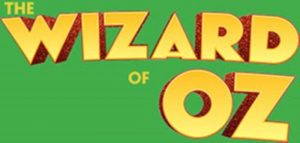Our Wizard of Oz
June 30, 2017, by Matthew Krajniak
 Through July 30th Main Street Theater and from July 8 – 16th Class Act Productions are staging The Wizard of Oz, a story that was popular in my childhood home, just like, evidently, the childhood home of about every person I told of this play.
Through July 30th Main Street Theater and from July 8 – 16th Class Act Productions are staging The Wizard of Oz, a story that was popular in my childhood home, just like, evidently, the childhood home of about every person I told of this play.
For me, my mother and I would watch Judy Garland and Bert Lahr anytime one of my numerable ear infections happened and I couldn’t sleep. For others the ’39 movie or the original book by L. Frank Baum, The Wonderful Wizard of Oz, was often played or read at holiday gatherings, childhood events, or just ‘cause. With the dramatic growth in the children’s literature and YA markets over the past twenty years though, I’m curious as to what other books geared toward youths were popular before this contemporary explosion, and where Baum’s book fits in among them.
What I’m immediately reminded of is that there were no adolescents until 1904. More accurately, society didn’t more fully delineate an individual’s development until the American Psychological Association stepped in, meaning that before Baum’s 1900 book, writers didn’t pay much attention to non-adults because society wasn’t really doing so either. Still, we find a handful of popular, pre-20th century titles geared toward children and early teens such as Aesop’s Fables (c. 600 BCE), Tales of Mother Goose (1729), and Through the Looking-Glass (1871). Certainly there are other titles that could fall under this heading of popular, pre-20th century books for children or adolescents, but after looking over a number of lists related to such, it becomes clear that the definition for both children’s and young adult literature varies greatly. For example, books such as Arabian Nights (c. 700 CE), Gulliver’s Travels (1726), and A Tale of Two Cities (1859) are consistently cited on these indexes, but a convincing argument could be made that these books are too heavy with adult themes to be considered geared towards youth, that, in short, they didn’t have the same audience in mind as did Mother Goose, Alice in Wonderland, and Oz. This to say that while Baum’s Oz had its predecessors, there aren’t as many as one might originally think.
What’s interesting is the influence The Wonderful Wizard of Oz had on the genre, since after an initial wave of praise, it didn’t have as much impact as one might expect. More specifically, The Times original review of the book was good and the book was a bestseller for its first two years, but because The Wonderful Wizard of Oz was one in a series of fourteen, it started to fall out of favor with critics who cited the lengthy series as diminishing the quality of the original. In fact, Baum himself might agree with this assessment as after this first book he didn’t want to write anymore Oz books, but because of popular demand (particularly by children who wrote him letters) and money issues, he reluctantly turned it into a series. It wasn’t until after his death in 1919 and the film’s ’39 debut in all its Technicolor glory, that interest in the original book returned.
And, obviously, this is just a cursory peek into the history of this beloved book and its related genres, but I guess what’s most surprising is just how early this book appears in the genealogy of children’s and YA literature, and that there were decades when the book fell into disfavor. Regardless, it’s tough to imagine this book and movie not continuing to be a popular choice in homes with children, despite there being more new YA titles and authors than munchkins in Oz.

